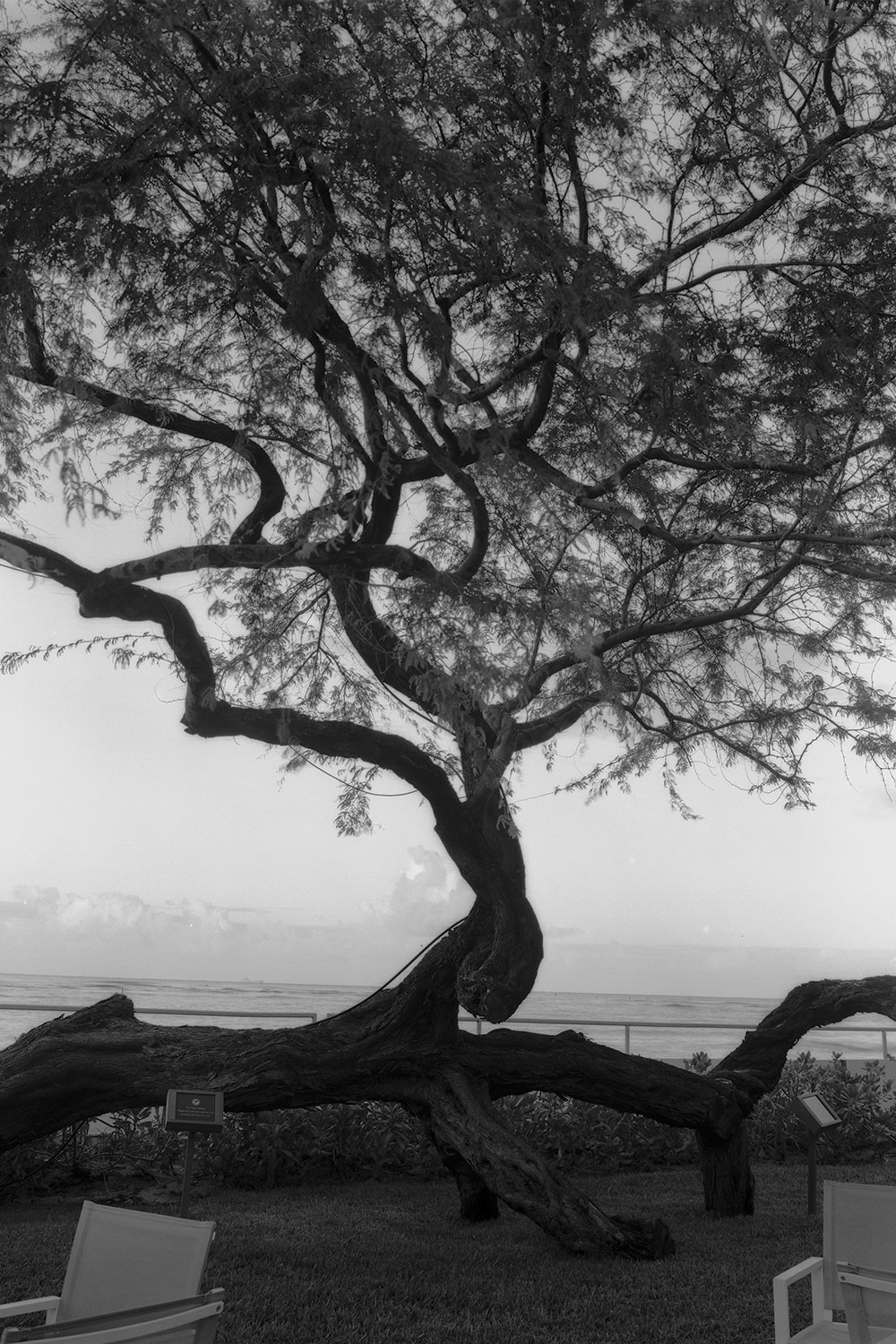In 1887, 3-year-old Florence Hall, alongside her father, William Hall, planted a small thornless kiawe sapling in the grassy lawn of Halekulani. The simple, seaside ceremony took place just outside of the building where the young Florence had been born. Over the next century, the tree grew, its boughs shaped by the sun and sea breezes, its outstretched canopy a delicate latticework of leaf and stem. Through Hawai‘i’s emergence to statehood, two World Wars, tourism booms, and cultural renaissances, the tree has borne witness to events both grand and minute, holding court over a hundred years’ worth of contemplations, conversations, and celebrations. To this day, paradise is found and memories are made under the silvered boughs of this “grand lady,” as many hotel staff have come to call the arbor.
But in the early, silent hours of August 21, 2016, absent of any monitory wind or rain, the historic tree fell. It pitched over in the most ideal manner, falling between the shore passage railing and the House Without a Key’s stage. No one was hurt and no damage was done. The most unusual aspect of all was that no one witnessed its fall. Surveillance footage revealed the tree upright in one frame, and then moments later, simply lying down.
Following the recommendations of arborists, groundskeepers quickly moved to cover the exposed roots with wet burlap sacks. Some branches were removed, others coppiced. The roots have since reestablished, and tender new shoots now unfurl skyward. Today, the historic kiawe tree continues to be an elegant symbol of the hotel’s grandeur and grace, presiding over the grounds as Halekulani’s living treasure.





































Share: